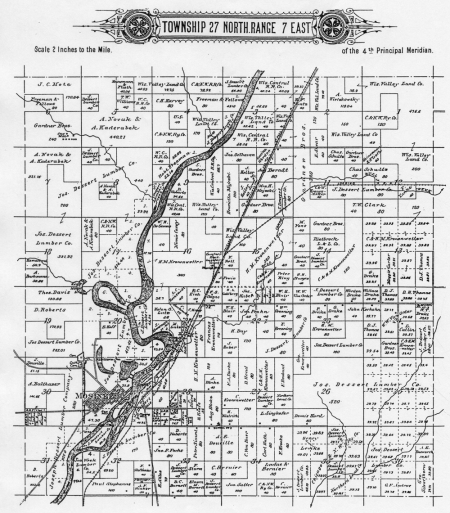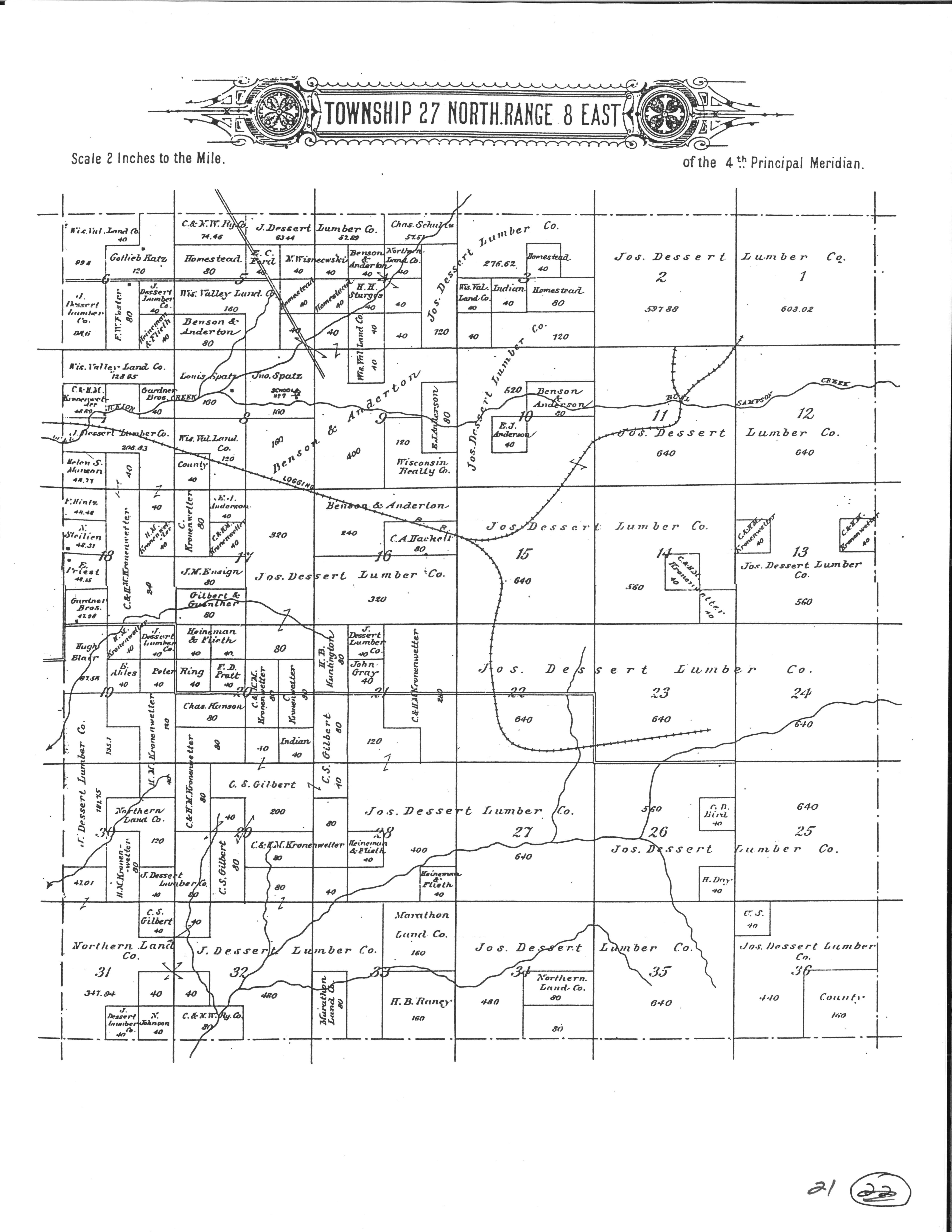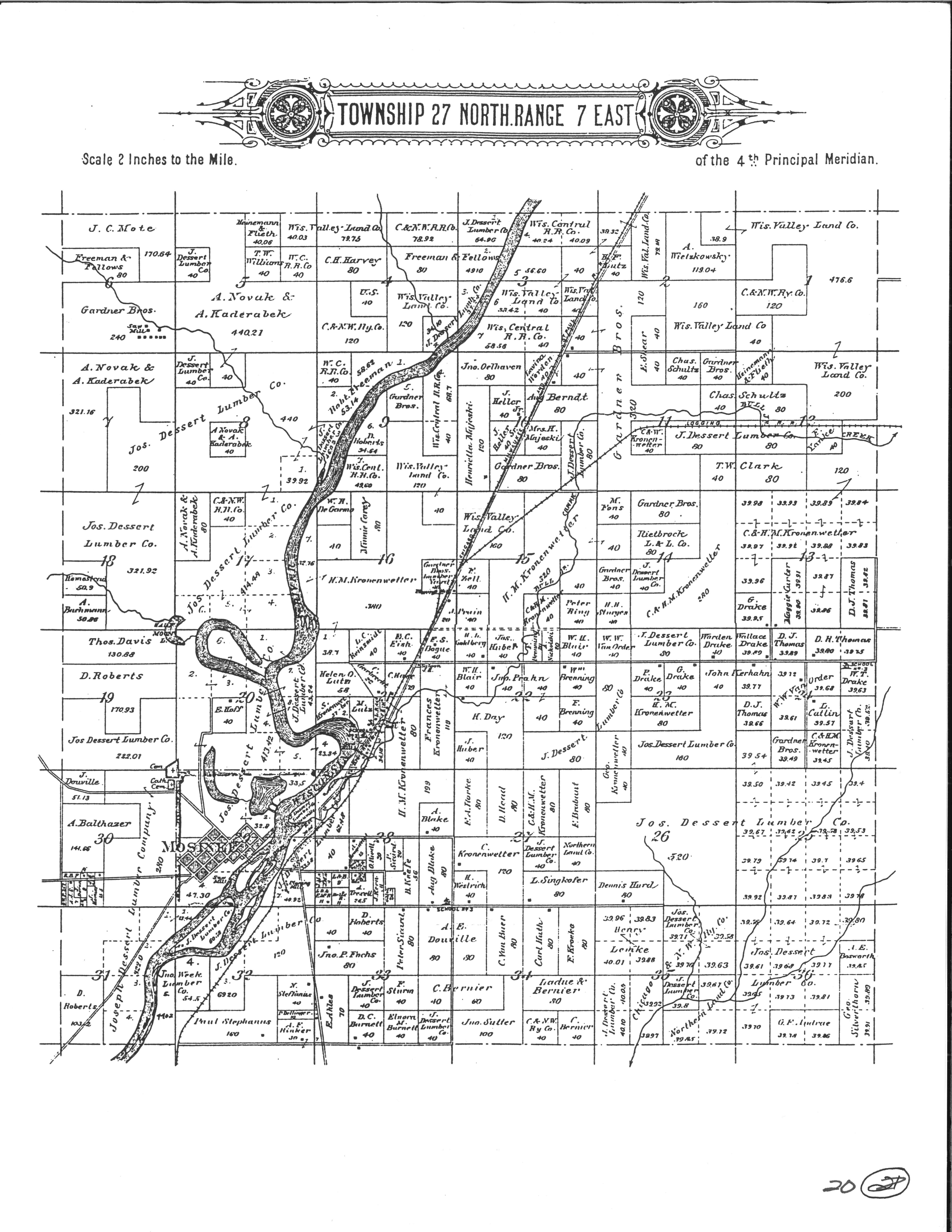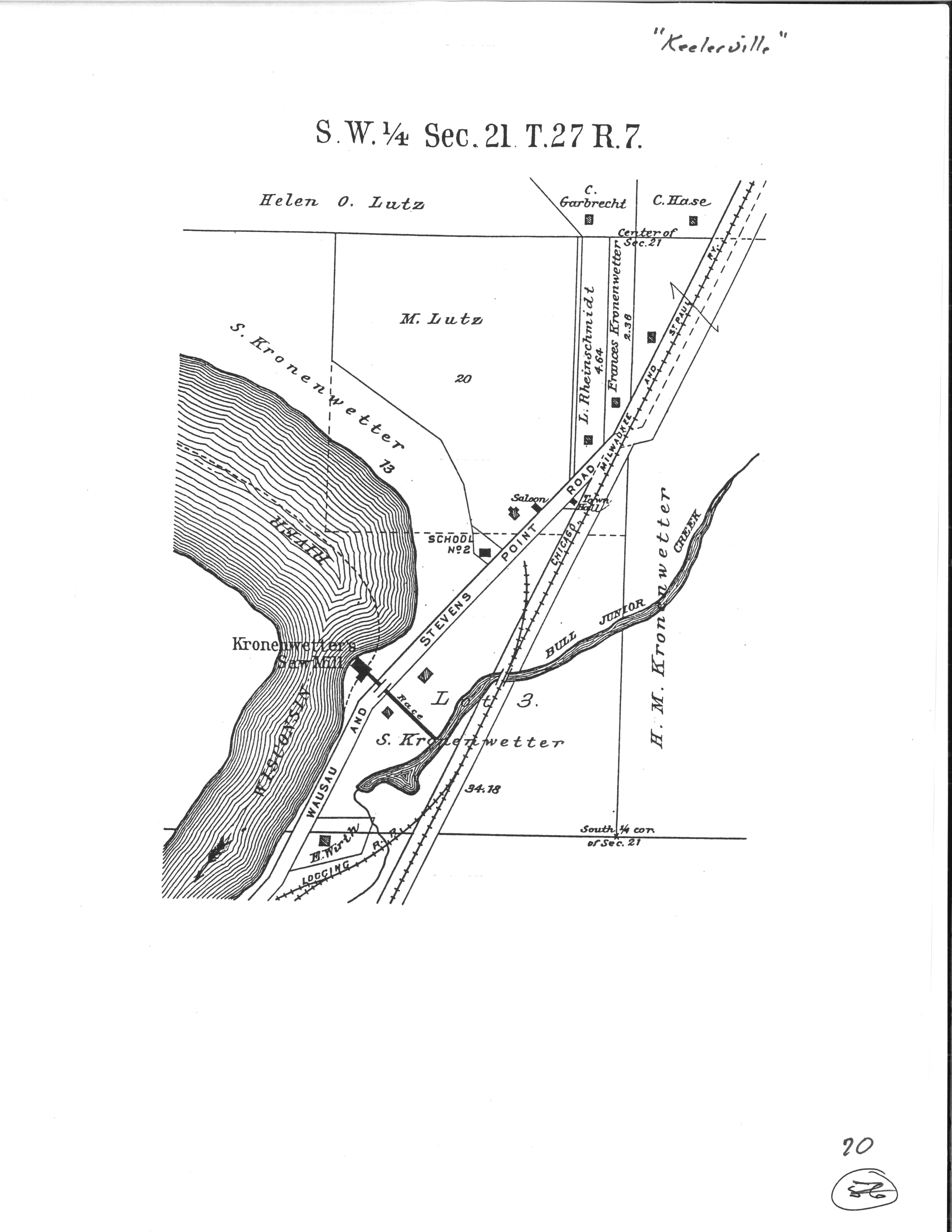Search our Places Database
Kronenwetter, Township of
Return To List of Locations | Back to Search
For more information on this location, please contact our research library.

Author:
Mary Moltzan
Location:
T. 27 N. - R. 7 E., east of the Wisconsin River and 8 E.
Formallized:
November 11, 1886
Background:
Population: 1905-511, 2000-5369.
Almost all of Kronenwetter was incorporated into a village in 2004. The township was created out of the eastern portion of Mosinee Township in 1886. At the time of its organization, there were few farmers, and the only industrial enterprise was the sawmill of S. Kronenwetter located on Bull Junior Creek where it entered the Wisconsin River. This sawmill ended business, but another business, incorporated in 1910, developed a short distance down river manufacturing sulphate pulp and sulphate paper. It eventually became the Mosinee Paper Mill.
First Public Official:
Sebastian Kronenwetter
Biography:
The first township president was a man of forceful personality with determination and keen foresight. The township was named after him. He represented the township on the Marathon County Board for 10 years and served as its chairman in 1880. In 1885, he was elected to a term in the Wisconsin State Legislator. Kronenwetter was born in Wurtemberg, Germany on January 20, 1833 and came to America (Pennsylvania) in 1846 with his family. On October 15, 1855, he married a French immigrant, Mary de Biri. The couple moved to Wisconsin in 1857 and settled in the village of Little Bull Falls/Mosinee. Sebastian worked in the pineries for two years. After this, he ran a boarding house, providing lodging for the lumberjacks. By 1861, the business had prospered enough so that he and his family could invest and live in a Wausau hotel on the corner of Second and Jackson streets. It burned down two years later bankrupting Sebastian. By 1870, he had saved enough money to purchase the small mill originally owned by Keeler at the mouth of Bull Junior Creek. He operated this mill until his death on April 27, 1902. Mary and Sebastian had nine children, two of whom died in infancy.
See also Settlement of Keelerville.
Post Office Established:
January 19, 1891
First Postmaster:
George C. Flanner
About The Post Office:
Flanner - P.O. was discontinued on April 19, 1899 with service from Mosinee. The P.O. was located in or near Section 16. This was the only P.O. ever located in the Village of Kronenwetter.
Railroad:
The Chicago, Milwaukee & St. Paul stopped operating passenger service in 1972, but freight operations continue through the township to the present.
Churches:
St. John the Baptist Catholic Church - built as a frame building in 1915. On Christmas Eve, 1937, it burned, and a new brick church was constructed in 1938.
Schools:
1. Edison School - built in 1925 on the corner of the present Hwy. 153 and Old Hwy. 51. It burned in the later 1950s.
2. Black School - built in 1920. Later, it was named Paleski School and burned in 1940.
3. Liberty School - built in 1918 on the corner of Ring Rd. and Hwy. 153. Burned in 1971.
4. Sabieski School - built in 1930 on the corner of Hwy. 153 and Cty. Hwy X. It was converted to a home in 1940.
5. Elm Grove School - was located on Old Hwy. 51. It ceased operation with school consolidation and is now known as A&W Trucking Co.
6. Orton School - built in 1918 on Pioneer Rd. This school was presumably named after the Honorable Harlow S. Orton who was a Justice on the Wisconsin Supreme Court from 1878 to 1895 and the Chief Justice on the Wisconsin Supreme Court from 1894 to 1895.
7. Maple Ridge School - built in 1920 on Maple Ridge Rd.
8. Lyon School - built in 1922 on Creek Rd. The Lyon School was presumably named after the Honorable Wm. P. Lyon who was a Justice on the Wisconsin Supreme Court from 1871 to 1894 and was a Chief Justice from 1892 to 1894.
9. Pine School - located on Pine Rd. or is it Paine School which was presumably named after the Honorable Byron Paine, a Justice on the Wisconsin Supreme Court from 1859 to 1864 and 1867 to 1871.
10. Kusciesko School - also spelled "Kosciuszko" -built in 1920 on Cty. Hwy. X. Presumably, it was named after the Polish patriot named Tadeusz Kosciuszko who fought in the American Revolutionary War and was later awarded citizenship in the U.S. in 1873.
11. A log school built in 1914 on Hwy. 153 only lasted a few years.
Business:
A boarding house was built in 1910 on River Rd. and owned by the Mosinee Paper Mills. It burned down Christmas Eve, 1916.
See Settlements of Keelerville and Peplin
Industry:
1. Sawmills
2. Cheese factories - The first one on the corner of Hwy. 153 and Old Hwy. 51 was built by Edwin Emmerich in 1908.
3. Mosinee Paper Mill was built in 1910 on its current site at Hwy. 153 and Old Hwy. 51 along the Wisconsin River.
See Settlement of Peplin
Farming:
Farmers started settling in the northwestern part of the township in 1886, and by 1900 these people, through a lot of hard work, had developed nice farms and buildings.
See also Settlement of Peplin
Stories:
See Settlement of Keelerville





